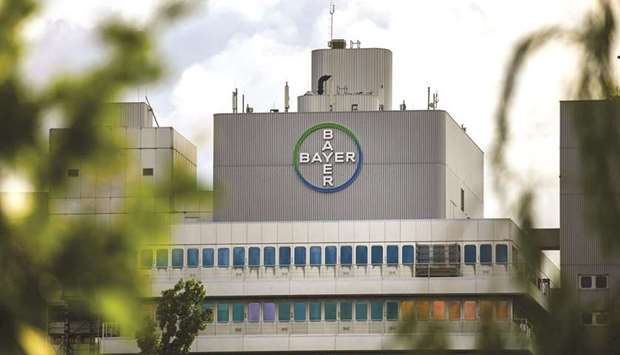Bayer AG agreed to buy US biotech company Vividion Therapeutics Inc for as much as $2bn, snapping up a developer of promising therapies that only weeks ago filed for an initial public offering.
The German drugmaker will pay $1.5bn up front and another $500mn in potential milestones for the San Diego-based biotech, it said in a statement on Thursday. The company also raised its profit forecast for the year.
For Bayer, the transaction is the latest in a string of deals intended to bolster innovation at the pharma unit and fuel growth as its top blockbuster medicines face the loss of patent protection. The company has worked to buoy its presence in cell and gene therapies, especially with the $4bn takeover of Asklepios BioPharmaceutical Inc.
While Vividion is currently developing therapies against cancers and immune disorders, its technology platform – which screens the surfaces of proteins for binding targets that are shallower than drugmakers have previously considered – can basically be applied to any disease area. That could unlock new areas for therapies, since about 90% of known disease-causing proteins can’t be targeted by existing medicines, the company says.
Bayer should be able to capitalise on the newly discovered targets thanks to its deep bench of chemists and expansive compound library, said Stefan Oelrich, Bayer’s head of pharmaceuticals. “Vividion is a one-of-a-kind, best-in-class platform,” he said. “If we put our chemistry and our chemists to support them, this is exactly what they need to scale up their business.”
Bayer’s pharma unit has struggled for attention following the company’s $63bn takeover of agriculture giant Monsanto in 2018. That hefty price tag was only the start of the costs, since the deal brought Bayer an increasingly expensive set of legal troubles, above all for the controversial weedkiller Roundup. The company said last week it may have to spend as much as $16bn to resolve litigation on Roundup, which plaintiffs say causes cancer and Bayer insists is safe.
The company on Thursday raised its full-year profit forecast as high commodity prices boosted its crops unit and medicines like the eye treatment Eylea recovered as pandemic lockdowns ended. Core earnings per share could rise to as much as €6.60, it estimated, up from an earlier ceiling of €6.30.
In a filing in late June about its planned IPO, Vividion said it expected to submit its first drug application to the US Food and Drug Administration in 2022. Around that same time in June, chief executive officer Jeff Hatfield received a surprise phone call from Oelrich, who offered to buy the company but allow it keep operating independently. Vividion’s board of directors said it would entertain the offer, but insisted on moving full-speed ahead with the public listing, Hatfield said in an interview. “It was a dual track all the way down, honestly, to within hours of the finish line,” Hatfield said. “Bayer has a historic strength in chemistry.
And they also have strengths in product development and product commercialisation that frankly are difficult for a biotech to scale up to very rapidly. And we’re on a very steep trajectory of drug discovery.”
Lacking funds for megadeals, Bayer’s pharma unit has hunted for earlier-stage companies than some of its rivals, which can afford to scoop up biotechs with products close to coming to market.
Still, Bayer expects three of its newer drugs to garner annual revenue of €1bn ($1.2bn) or more each in coming years, softening the blow when top treatments Xarelto and Eyelea lose patent protection.
For Oelrich, the idea of buying Vividion took root last fall, after he brought in Christian Rommel to be Bayer’s head of pharmaceuticals research and development. Rommel, previously with Roche Holding AG, had long been familiar with Vividion and told Oelrich right away that it would fit well with Bayer’s chemistry strengths, according to Oelrich.
“He was in love with this on the day he joined us,” Oelrich said. “I said, ‘Well, you get used to working here first and then we’ll look at that.’ But he wouldn’t let go. And so then during this summer, this got to the next level.”

An external view of Bayer pharmaceutical plant in Berlin. Bayer agreed to buy US biotech company Vividion Therapeutics for as much as $2bn, snapping up a developer of promising therapies that only weeks ago filed for an initial public offering.
